"A Pryor Engagement" at BAM Is a Welcome Reminder of the Film Work of an Influential Comic Genius
-thumb-860xauto-36756.jpg)
"A Pryor Engagement," an 18-title survey of films featuring Richard Pryor, a comedian whose influence continues to loom over many others who followed in his wake (Chris Rock, Eddie Murphy, and Louis C.K. being only a few examples), screens at BAMcinématek in New York from February 8 through February 21.
Pryor's politically astute and personally confessional humor, mining his painful struggles with drug addiction and complicated relationships with women, found expression in classic comedy albums as well as films with varying degrees of quality. BAM's series includes some of the more notable entries of Pryor's vast filmography (40 films), all in 35 millimeter, and all well worth catching on the big screen. As an added attraction, Monday through Thursday screenings are themed double features for single-admission price. Also, three cultural critics who have written extensively on Pryor will appear in person to introduce films in the series. Armond White introduces Lady Sings the Blues on Feb. 11; Nelson George introduces Which Way Is Up? on Feb 20; and Hilton Als introduces Jo Jo Dancer, Your Life is Calling on Feb. 21. Below are reviews of some noteworthy films in the series.
Blue Collar (Paul Schrader, 1978)
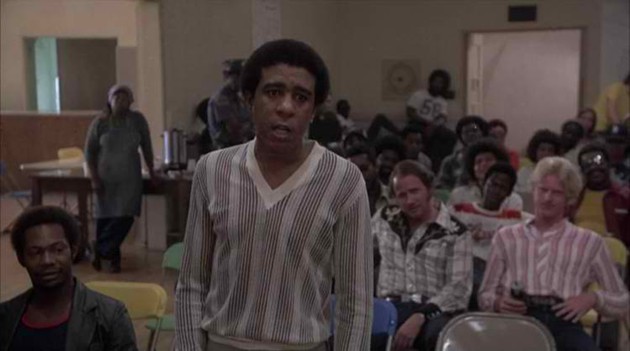
Schrader's directorial debut (and still his best, along with Mishima) contains Pryor's finest dramatic role, as Zeke, an auto assembly-line worker in Detroit in constant fear of not being able to provide for his family, and in constant seething frustration with both oppressive management and an ineffectual, uncaring union. Pryor channels the live-wire energy of his comic routines and preternatural ability to inhabit characters to create a powerful portrait of a man who jettisons any notion of loyalty or conscience in the interests of self-preservation, friends and co-workers be damned. This was a famously combative shoot, with Pryor and co-stars Harvey Keitel and Yaphet Kotto at one another's throats (shouting matches and fistfights were the norm between takes), and Pryor constantly at odds with Schrader. But the results on screen belie any of this on-set tension; Blue Collar remains one of the most authentic-feeling movies about workers' struggles, and has not lost one iota of relevance from the time of its release.
(Feb. 10, 2pm and 7pm)
Stir Crazy (Sidney Poitier, 1980)
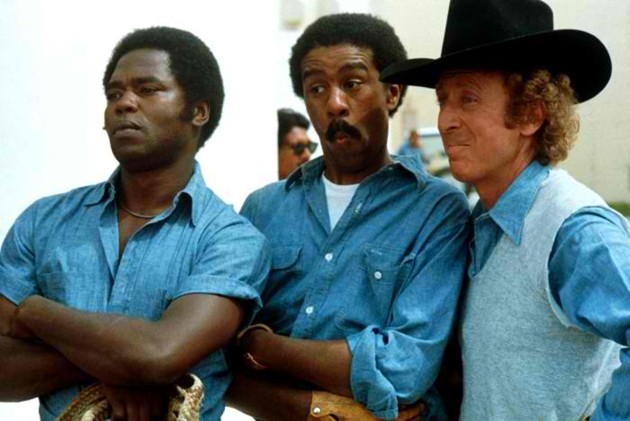
The second, and the most financially successful, of Pryor's four onscreen pairings with Gene Wilder, Stir Crazy exists mostly as a frame for the two to get into outrageous shenanigans in many different situations, and it mostly works on that level. The scenarios increase in preposterousness as the film progresses. Their characters, an actor (Pryor) and a playwright (Wilder), leave the bad old city of New York, setting off for sunny California in search of greater opportunities. They get waylaid in Arizona, where while on a job wearing chicken suits for a bank promotion, are mistaken for bank robbers, given a 125-year prison sentence, and plot an escape involving a prison rodeo. Pryor's odd-couple chemistry with Wilder yields its most fruitful results here; Pryor's perpetually exploding neurotic character combines with Wilder's sunny optimist as well as chocolate with peanut butter, yielding frequent hilarity.
(Feb. 12, 7:25pm)
Richard Pryor Live on the Sunset Strip (Joe Layton, 1982)
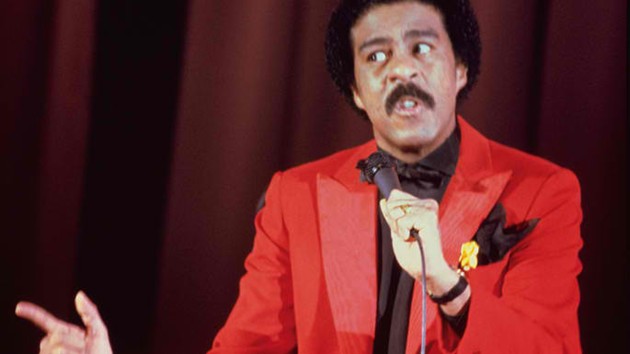
Of the 40 films that Pryor appeared in, which run the gamut from memorable classics to execrable embarrassments, the ones in which his comic and acting talents are showcased in their purest, most unadulterated form are his concert films. In these films, his prodigious talent for spinning compelling narratives based on his personal life and observations of the world, as well as his uncanny ability to impersonate other people, animals, and inanimate objects, shine with brilliant vividness. In this, his third concert film, after the immensely influential Richard Pryor: Live in Concert (1979), Pryor is at his most confessional and vulnerable. The Sunset Strip concerts (two performances were edited together to make this film) were his first on-stage appearances after the 1980 incident in which Pryor blew himself up while freebasing cocaine, nearly dying from his injuries. He eases into his performance with typically hilarious bits involving sex in the Carter and Reagan administrations, stories of various wives and girlfriends, a reminiscence of his experiences working in a Mafia-owned strip club in Ohio, and tales of his travels in the African safari. The latter passages get much more serious, but without losing their comic edge, as he relates what led up to his burning himself alive, as well as its aftermath. He impersonates his own freebase pipe, talking to him in soothing tones, assuring him that the pipe is his only friend and nothing else matters. This remains one of the most riveting examples of an artist baring his soul to his audience that have ever been captured on film, and alone makes Live on the Sunset Strip an enduring classic of recorded performance.
Richard Pryor ... Here and Now (Richard Pryor, 1983)
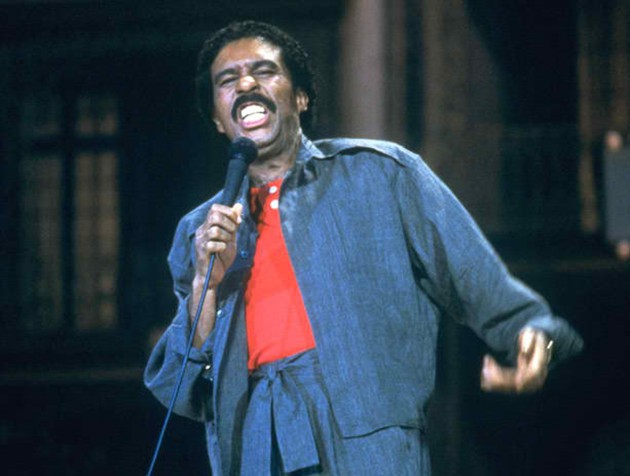
Pryor's final concert film, shot in New Orleans in front of a rowdy, heckling audience, some of whom are skeptical of his professed sobriety ("Bullshit!" one audience member yells when he mentions that fact), was directed by Pryor himself, self-consciously affirming his status as a great comedian. The film begins with a series of audience testimonials on how funny Pryor is, as well as Pryor himself speaking about how important his audience is to him, and his continuing efforts to remain sober. A visibly nervous Pryor is introduced by an on-stage announcer as "the two most beautiful words in the world of comedy ... Richard Pryor!" This effort to convince us of Pryor's greatness seemingly betrays a lack of confidence, which may have been a byproduct of performing while not under the influence. It's not needed, because Pryor is funny as ever here, riffing on now-familiar subjects such as dealing with coming home blind drunk, his travels in Africa, and dating black women and white women. His sobriety is also a potent source of humor, as he comes to the realization of the unattractiveness of the women he slept with while being high, as well as his discovery that he is not as well-endowed as he thought. Pryor includes a portrait of a neighborhood junkie remembered from his childhood that turns into a chilling dramatic monologue depicting him shooting smack and eventually dying. At times even more nakedly confessional than Live on the Sunset Strip, Here and Now showcases Pryor's lightning-quick wit and talent for instant improvisation; his exchange with a live crab onstage is a particular highlight.
(Feb. 21, 5:30pm and 9:45pm)
Jo Jo Dancer, Your Life is Calling (Richard Pryor, 1986)
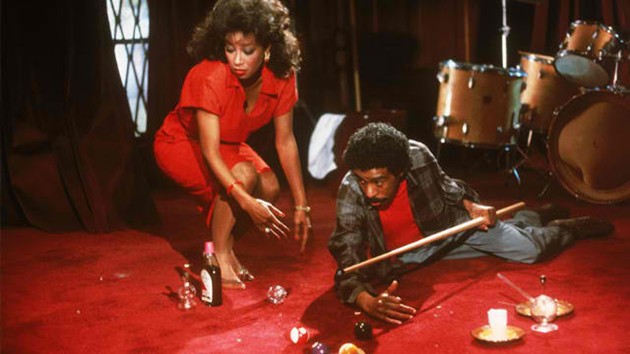
The first and only dramatic feature Pryor ever directed was clearly autobiographical, but he claimed it not to be such, perhaps as attempted insulation against accusations of narcissistic self-indulgence. Nevertheless, art potently imitates life in what could be said to be Pryor's version of All That Jazz, as famous comic Jo Jo Dancer (Pryor), goes through a near-death trip through his entire life, with an alter ego (Pryor again) guiding him and attempting to reverse his self-destructive trajectory. Jo Jo Dancer was filmed in actual locations in Pryor's hometown of Peoria, Illinois and in Los Angeles, where many well-known incidents in Pryor's autobiography took place. This film was released to mixed-to-negative reviews and meager box office, but despite its flaws, including some awkward transitions between scenes as well as its too-abrupt happy ending, Jo Jo Dancer is a remarkably well-made (with nice photography by DP John A. Alonzo), fascinating and obviously intensely personal portrait of an artist's formation. Pryor's own performance is often quite riveting, and he visually embellishes stories familiar from his standup comedy: holding up mob guys to get his owed pay (here while bizarrely in full stripper drag); growing up in a family-owned whorehouse; and most frighteningly, severely burning himself in the freebasing incident, here depicted as a suicide attempt. It is a shame that the negative response to Jo Jo Dancer apparently convinced Pryor not to make another attempt at directing; he showed quite a talent at it, which under different circumstances (and a less tortured life experience) might have taken his career in an interesting new direction.
(Feb. 21, 7pm, introduced by Hilton Als)
For more information on these and other films in the series, and to purchase tickets, visit BAM's website.

Do you feel this content is inappropriate or infringes upon your rights? Click here to report it, or see our DMCA policy.






